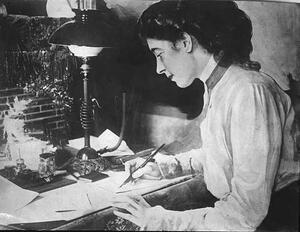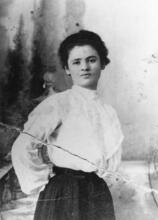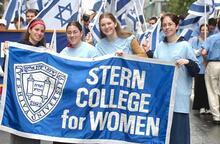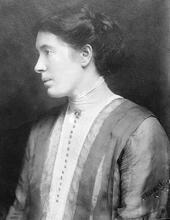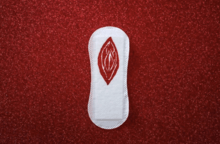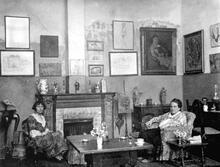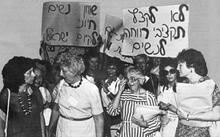Communism in the United States
From the 1920s into the 1950s, the Communist Party USA (CP) was the most dynamic sector of the American left, and Jewish women made up an exceptionally large portion of the party and its affiliated organizations. Yiddish-speaking immigrants were especially active in the 1920s, when the party fostered revolutionary yiddishkeit. In the 1930s and 1940s, U.S.-born daughters of immigrants took center stage, carrying the party’s revolutionary version of Americanism into community organizations, labor unions, student movements, and cultural projects. In the 1950s and 1960s, when the domestic “red scare” and international Cold War shattered the party’s vitality, Jewish women formerly active in the CP or its affiliates turned to new movements and carried revolutionary traditions into rising struggles against racism, sexism, and imperialism.
In the forty years following the Russian Revolution of October 1917, communism was the most dynamic force in American left-wing politics and a primary mobilizer of radical Jewish women. At the center of this movement lay the American Communist Party, which grew out of various radical factions inspired by the October Revolution. In December 1921, most of these groups came together as the Workers Party, renamed the Communist Party USA (CP) in 1930.
Revolutionary Yiddishkeit
Jewish women, mostly Eastern European immigrants in New York City, helped to lead the communist cause and were a vital component of its rank and file. Notable leaders included Rose Wortis, a legendary labor organizer in the needle trades, Rose Pastor Stokes, a radical journalist elected to the Workers Party’s central executive committee, and Betty Gannett, who joined the party as a teenager in 1923 and was appointed national education director of its Young Communist League in 1929. The majority of rank-and-file party members were garment workers or housewives. Many came to the Party through the Jewish Federation, a Yiddish-language organization that originated in the Socialist Party and defected to the communists in 1922.
The Jewish Federation’s mission was to preserve and invigorate revolutionary yiddishkeit through community-based cultural projects, work that found a generally comfortable home in the communist movement of the early 1920s. While nativism and racism surged in American society at large, ethnic communism flourished in the Workers Party. By the time the Yiddishists joined, the party contained a slew of other foreign-language federations as well. The Yiddishists gave the party a vital link to, and influence among, the large Jewish immigrant Left. The Morgen Frayhayt, the communist Yiddish-language daily established in New York in 1922, soon gained more readers than the whole Workers Party had members. In the mid-1920s, its circulation stood at about 22,000, while the party’s national membership was about 16,000 (approximately fifteen percent of it Jewish). The Jewish Federation spearheaded the creation of a rich network of ethnic summer camps, schools, choirs, and dramatic clubs. Jewish women—Party members and larger numbers of sympathizers—were deeply involved in these efforts to keep left-wing yiddishkeit alive in a hostile America. In particular, the activists focused on projects aimed at the native-born children of immigrants.
In the second half of the 1920s, the Yiddishist communists lost ground both within and outside the Workers Party. In 1925, in response to advice from the Soviet-led Communist International (Comintern), the party dissolved its foreign-language federations, and the Yiddishists’ previously autonomous activities came under the control of party leaders for whom cultural work had a low priority. A second blow fell in 1928, when the Comintern urged its member parties to beware of alliances with the larger left and internal deviations from Bolshevism. This directive further diminished the resources available to Yiddishists in the Workers Party and subjected them to attack from non-Jewish members. As one woman recalled in an interview with historian Paul Buhle: “We weren’t allowed to be proud that some great public figure was Jewish. … They used to laugh and complain about our having a Lit. "son of the commandment." A boy who has reached legal-religious maturity and is now obligated to fulfill the commandmentsbar mitzva or celebrating the holidays.” Then, in August 1929, the Yiddishists themselves undercut their outside support by defending the Comintern’s endorsement of an Arab pogrom against Jews in Palestine and by inaugurating a series of anti-Zionist rallies in New York’s Jewish communities. The communities retaliated with a boycott of the Morgen Frayhayt and assaults on communist meetings. Despite these setbacks, most Yiddishist communists stayed with the party and continued their commitment to yiddishkeit, but their cultural work never regained its initial momentum—not even after a shift in Comintern policy in 1935 prompted party leaders to exchange sectarianism for broad alliances with antifascist forces, including an array of Jewish organizations, both English- and Yiddish-speaking.
While the Yiddishist projects flagged, the late 1920s saw some advances in community activism by Jewish communists, particularly women. Starting in Brooklyn’s Brownsville district in 1926, communist activist housewives such as Clara Lemlich Shavelson, a former union organizer, and Kate Gitlow mobilized women in Jewish neighborhoods throughout New York City to protest exorbitant food and housing costs. In June 1929, this movement gave birth to the United Council of Working Class Women (UCWW). Though its membership was almost entirely Jewish until the mid-1930s, the UCCW was not officially an ethnic association. This departure from Yiddishist activism not only dovetailed with the Workers Party policy but also reflected a growing trend in Jewish communities. Older immigrant Yiddishists were progressively outnumbered by younger, native-born leftists who were as self-consciously American as they were Jewish.
The Communist Party’s Heyday
Many of these younger radicals aligned themselves with communism during the Great Depression and World War II, the heyday of both the Communist Party and Jewish women’s involvement in its work. The party swelled from just under 10,000 members in 1929 to about 40,000 in 1936 and to 83,000 in 1943. Women’s share of the membership expanded from about fifteen percent in the early 1930s to more than 30 percent at the end of the decade and about 46 percent in 1943. CP historians estimate, moreover, that almost half of the party’s membership was Jewish in the 1930s and 1940s, and that approximately 100,000 Jews passed through the party in those decades of high member turnover. It seems safe to say, then, that Jewish women were one of the CP’s largest sectors during the Depression and war years, and for each who became a “card-carrying” communist, there were several who took part in party-led projects or organizations but did not belong to the party itself.
In addition to industrial workers and housewives, the new generation of Jewish women connected with the CP included large numbers of college students, schoolteachers, office workers, and social service professionals. There was also a small but significant cadre of artists and intellectuals, such as playwright Lillian Hellman and anthropologist Eslanda Cardozo Goode Robeson, an African-American descendant of Sephardic Jews, who wrote and lectured on African affairs. In the early to mid-1930s, radical Jewish women were mainly engaged in neighborhood activism through unemployed councils (organizations of unemployed workers) and housewife movements such as the UCWW. Toward the end of the decade, their focus shifted to the labor movement, expanding beyond the traditional strongholds in the needle trades into newborn “red unions” such as the United Office and Professional Workers of America and to radical sectors of mainstream unions like the American Federation of Teachers. Jewish women also played important roles in communist-led student and youth movements, campaigns to defend civil liberties, and coalitions in solidarity with Spanish Republicans and the Soviet Union.
Radical activism extended far beyond New York City, which still had the largest proportion of Jewish communists but which was no longer their only stronghold. A second vital center was the CP’s California branch, whose Jewish members included civil liberties leader Elaine Black Yoneda, labor leader Dorothy Healey, and a host of lesser-known women. Smaller groups of Jewish women worked with the party in cities and university towns throughout the Northeast, the Midwest, and parts of the South.
Jewish communists did much of their organizing among Jews, often through multiethnic movements, Jewish fraternal networks, coalitions of women’s clubs, and the Yidishe Kultur Farband, founded in 1937. This work reflected the ethnic consciousness among Jewish communists and heightened their attention to the party’s position on Jewish issues. For example, both the older Yiddishists and the younger, Americanized generation were especially proud of the Soviet Union’s laws against antisemitism. They were pained by the Soviet peace pact with Nazi Germany from August 1939 to June 1941 and cheered by the Party’s post–World War II support for the establishment of a Jewish homeland in Palestine. The memoirs of Jewish women about communism suggest that these policies mattered not only in and of themselves, but also in terms of their beneficial effect on grass-roots organizing.
The Red Scare and Beyond
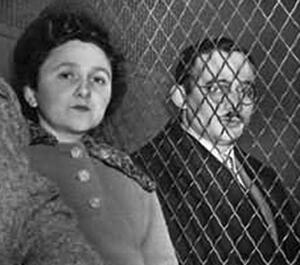
Ethel Rosenberg’s Jewish identity was forged not by any ties to traditional Judaism but by her political radicalism. Indeed, when she and her husband, Julius, were charged with espionage, attempts were made by their fellow "leftists" to link their prosecution with antisemitism. But the established Jewish community, fearing any association with Jewish radicalism, rejected this charge. The couple was convicted on March 29, 1951, and sentenced to death, the only two American civilians to be executed for espionage-related activity during the Cold War.
From 1946 to the mid-1950s, the Communist Party and its mass organizations were under unremitting attack from government, anticommunist labor leaders, and business associations. The most famous Jewish communist woman of this period was Ethel Rosenberg, who was convicted, along with her husband Julius, of conspiracy to commit espionage. In the 1990s, it came to light that, while Julius was likely guilty of the charge, the government had prosecuted Ethel without evidence, in an unsuccessful attempt to induce the couple to save their lives by testifying against others. Both of the Rosenbergs were executed in 1953. The “red scare” of the 1950s, along with political rifts inside the party, reduced its membership from around 80,000 at the end of World War II to about 23,000 in 1955. Retreat gave way to utter chaos in 1956, when the Soviets revealed Stalin’s crimes, Jewish communists in Poland denounced the Soviets for systematic antisemitism, and Soviet troops crushed the Hungarian revolt against Russian occupation. These events decimated the CP, which shrank to just 3,000 members by 1958 and lost almost all of its mass following. The McCarthyists’ drive to eliminate communism in the United States had been aided by the actions of communists in other countries.
As the CP waned, Jewish women who had belonged to the party or its mass organizations remained active on the left, devoting themselves to the civil rights movement, the antiwar movement, and women’s liberation. Prominent members of this cohort included the folk singer Malvina Reynolds; the pioneer women’s historians Eleanor Flexner and Gerda Lerner; the journalist and peace activist Mim Kelber; and Bella Abzug, a civil rights lawyer who helped to found Women Strike for Peace in the early 1960s, was elected to the House of Representatives in 1970, and became Congress’s most vocal opponent of the U.S. war in Vietnam and champion of the Equal Rights Amendment. While McCarthyism discouraged this generation from public identification with communism, such women kept the movement’s best traditions alive.
Although the Communist Party survives to this day, it is smaller than ever in both size and influence. Rival communist factions—Trotskyists, Maoists, and other Marxist-Leninists—thrived briefly in the 1960s and 1970s and surged again amidst the economic and political crises of the early twenty-first century. The CP’s dynamism in its heyday has yet to be matched, however. Jewish women remain a vital component of the American left, but the communists among them are increasingly few and belong to an array of competing sects.
Buhle, Mari Jo, Paul Buhle, and Dan Georgakas. Encyclopedia of the American Left. New York: Oxford University Press, 1998.
Buhle, Paul. “Jews and American Communism: The Cultural Question.” Radical History Review 23 (1980): 9–33.
Castledine, Jacqueline. Cold War Progressives: Women’s Interracial Organizing for Peace and Freedom. Urbana: University of Illinois Press, 2012.
Chernin, Kim. In My Mother’s House: a Daughter’s Story. West Lafayette, IN: Purdue University Press, 2019.
Coiner, Constance. Better Red: The Writing and Resistance of Tillie Olsen and Meridel Le Sueur. New York: Oxford University Press, 1995.
Dennis, Peggy. The Autobiography of an American Communist: A Personal View of a Political Life, 1925–1975. Westport, CT: L. Hill, 1977.
Draper, Theodore. American Communism and Soviet Russia: The Formative Period. New York: Viking Press, 1960.
Foster, William Z. History of the Communist Party of the United States. New York: International Publishers, 1952.
Gornick, Vivian. The Romance of American Communism. New York: Verso, 2020.
Gosse, Van. “‘To Organize in Every Neighborhood, in Every Home’: The Gender Politics of American Communists Between the Wars.” Radical History Review 50 (1991): 109–141.
Healey, Dorothy, and Maurice Isserman. California Red: A life in the American Communist Party. Urbana: University of Illinois Press, 1993.
Isserman, Maurice. Which Side Were You On? The American Communist Party during the Second World War. Middletown, CT: Wesleyan University Press, 1982.
Johnpoll, Bernard K., and Harvey Klehr, eds. Biographical Dictionary of the American Left. Westport, CT: Greenwood Press, 1986.
Lerner, Gerda. Fireweed: A Political Autobiography. Philadelphia: Temple University Press, 1982.
Murphy, Marjorie. Blackboard Unions: The AFT and the NEA, 1900–1980. Ithaca, NY: Cornell University Press, 1990.
Naison, Mark. Communists in Harlem during the Depression. Urbana: University of Illinois Press, 1983.
James, Edward T., ed. Notable American Women, 1607-1950: A Biographical Dictionary. 3 vols. Cambridge, MA: Belknap Press of Harvard University Press, 1971.
Sicherman, Barbara, and Carol Hurd Green, eds. Notable American Women: The Modern Period : A Biographical Dictionary. Cambridge, MA: Belknap Press of Harvard University Press, 1980.
Orleck, Annelise. Common Sense and a Little Fire: Women and Working-Class Politics in the United States, 1900–1965. Chapel Hill: The University of North Carolina Press, 1995.
Philipson, Ilene. Ethel Rosenberg: Beyond the Myths. New York: Franklin Watts, 1988.
Raineri, Vivian McGuckin. The Red Angel: The Life and Times of Elaine Black Yoneda, 1906-1988. New York: International Publishers, 1991.
Shaffer, Robert. “Women and the Communist Party, USA, 1930–1940.” Socialist Review 9 (1979): 73–118;
Roberts, Sam. The Brother: The Untold Story of Atomic Spy David Greenglass and How He Sent His Sister, Ethel Rosenberg, to the Electric Chair. New York: Random House, 2001.
Shannon, David A. The Decline of American Communism: A History of the Communist Party of the United States since 1945. New York: Harcourt Brace and company, 1959.
Schultz, Debra L. Going South: Jewish Women in the Civil Rights Movement. New York: New York University Press, 2001.
Taylor, Clarence. Reds at the Blackboard: Communism, Civil Rights, and the New York City Teachers Union. New York: Columbia University Press, 2011.
Weigand, Kate. Red Feminism: American Communism and the Making of Women's Liberation. Balitimore, MD: Johns Hopkins University Press, 2001.

